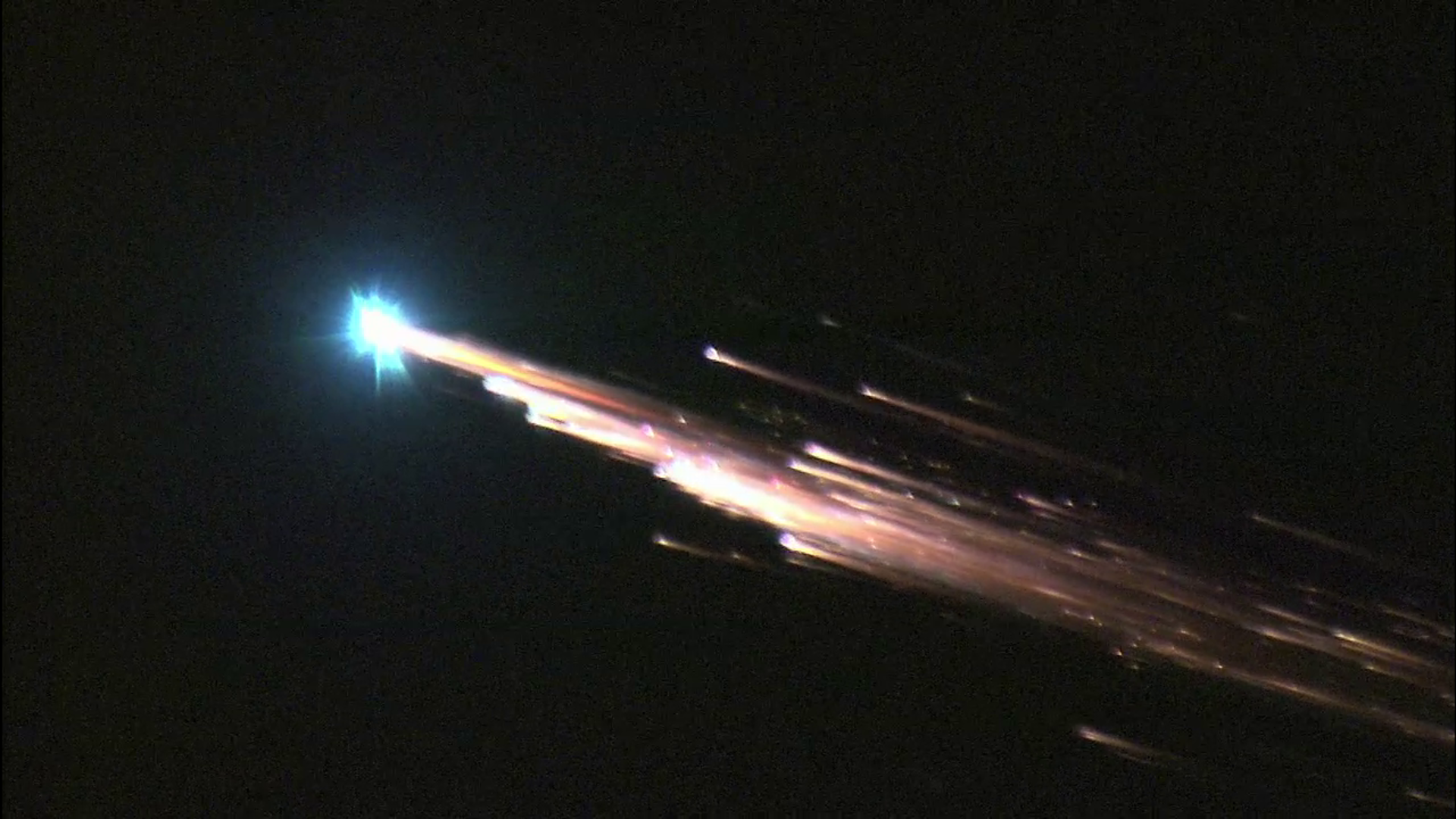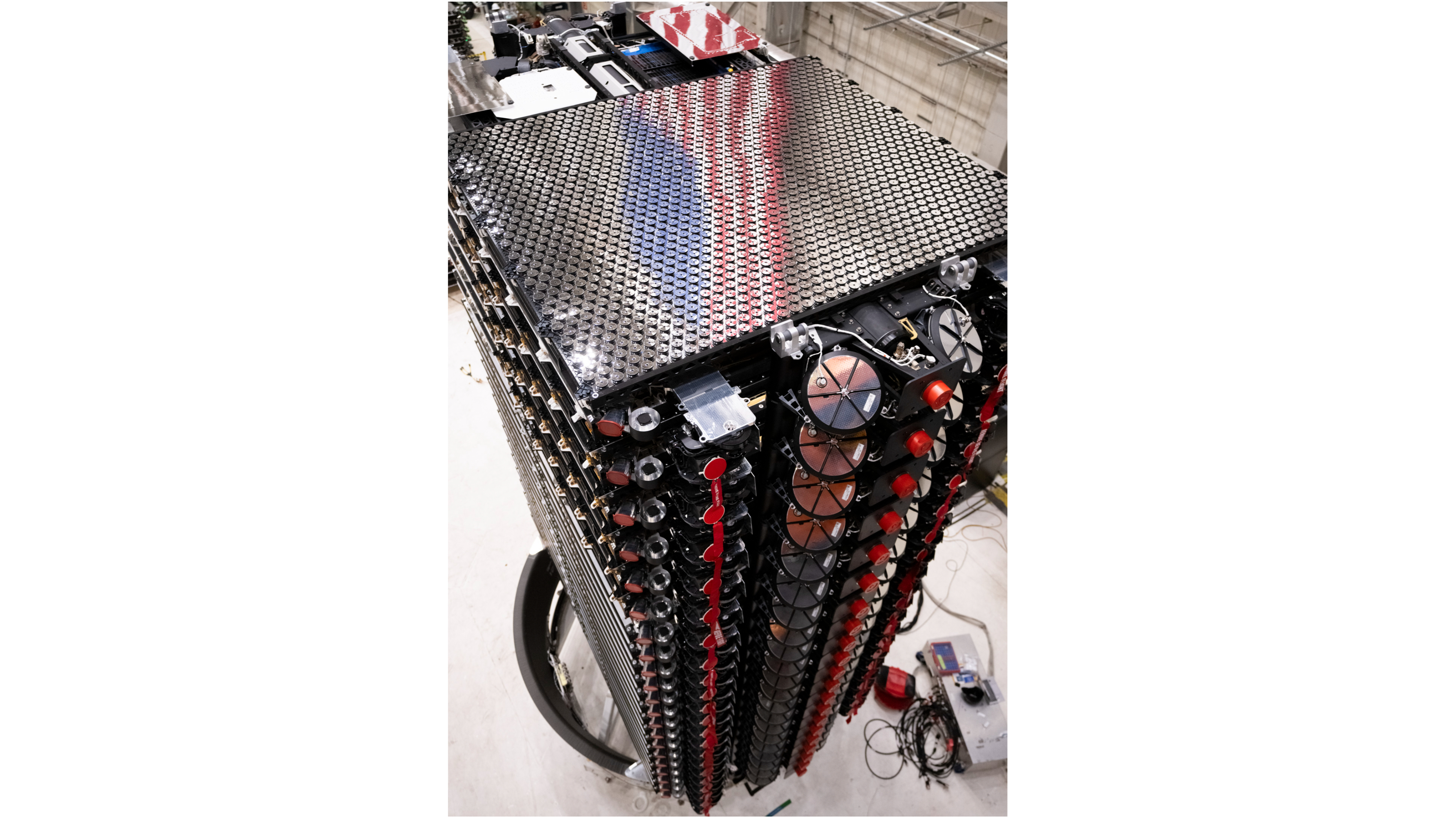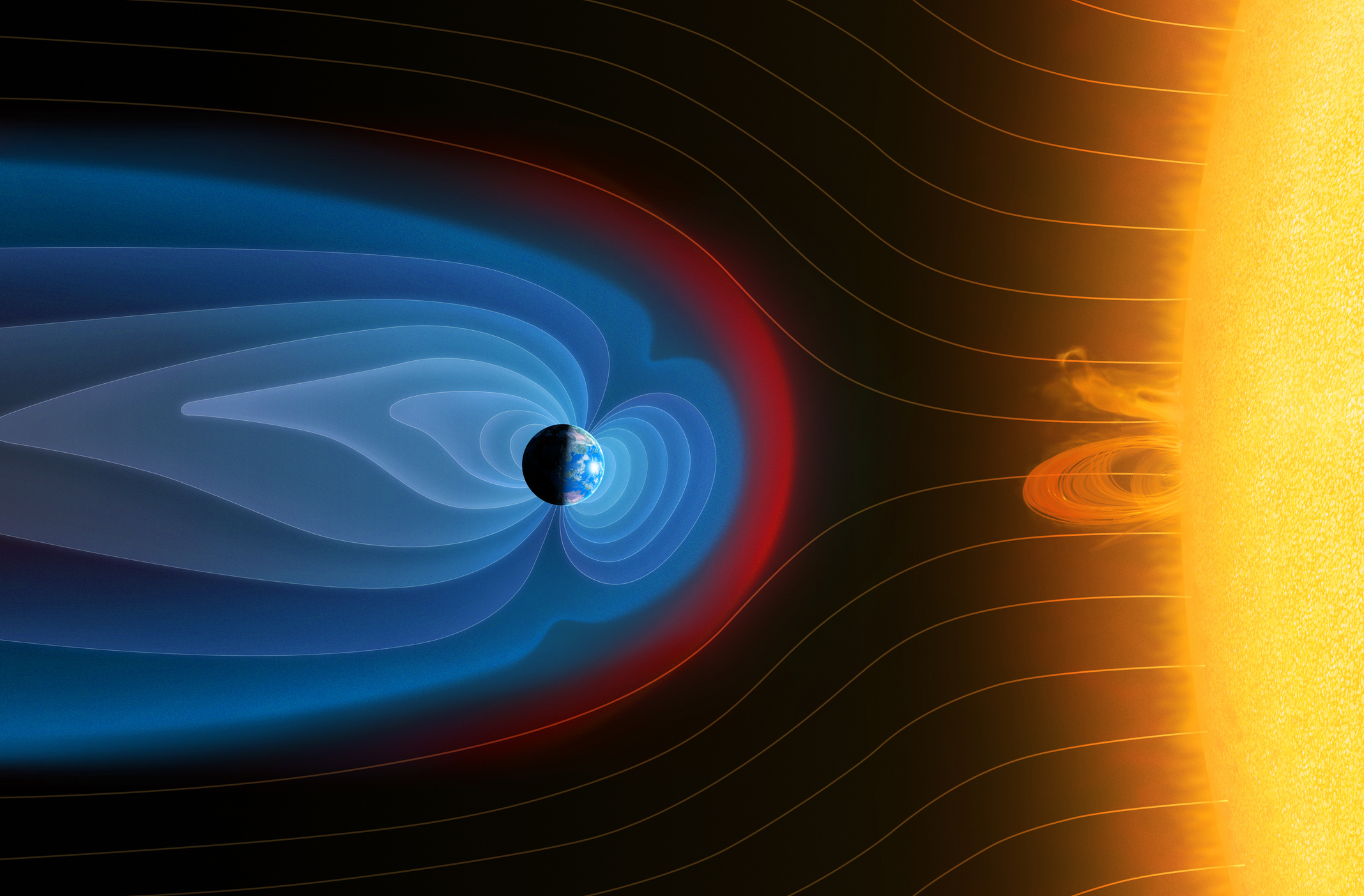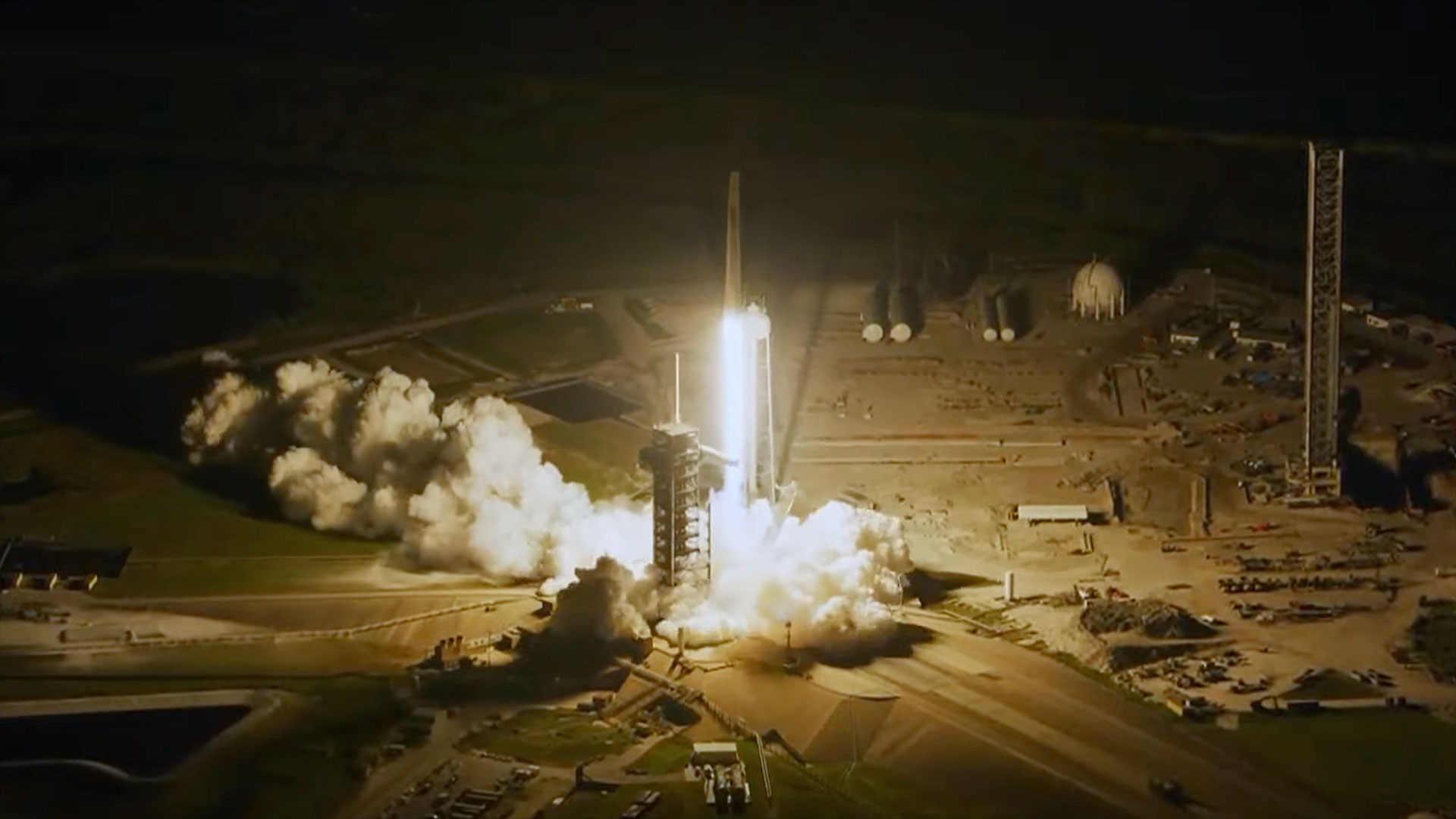Debris from burning satellites could be affecting Earth's magnetic field
"We're surrounding the planet with trash."

The environmental impacts of spaceflight are becoming increasingly clear as more and more spacecraft are launched into Earth's orbit.
The growing number of satellites burning up in Earth's atmosphere has concerned scientists for years, and now a new paper explores how the emerging shell of "conductive dust" around the planet that results from satellite re-entries may affect Earth's protective magnetic field.
"We're surrounding the planet with trash," Sierra Solter-Hunt, an American physicist and PhD candidate at the University of Iceland, told Space.com. Solter-Hunt is the sole author of the new paper, which has been published in December 2023 as pre-print on the online repository Arxiv and is still awaiting peer-review. Since then, the paper has stirred discussions online. Solter-Hunt is happy about that, even though some consider her conclusions exaggerated.
"I wanted to get the conversation started," she said.
Related: Burned-up space junk pollutes Earth's upper atmosphere, NASA planes find
Solter-Hunt came across the problem of increasing concentrations of metallic dust in Earth's upper atmosphere during her PhD research into "plasma dust." Plasma dust, she explains, arises from interactions of the fragile ionized gas that makes up Earth's upper atmosphere and the microscopic ash particles left behind from the burn-up of meteors that strike the planet as well as from satellites that spiral back after running out of fuel at the end of their missions.
Meteors have been hitting Earth since the beginning of time, but their chemical composition is completely different from that of satellites.
Breaking space news, the latest updates on rocket launches, skywatching events and more!
"Meteors only contain trace amounts of highly conductive metals" Solter-Hunt said. "Satellites, on the other hand, are basically entirely made of superconductive metals."
50 tons of space rocks evaporate in Earth's atmosphere every day, leaving behind about 450 kilograms of charged dust, according to Solter-Hunt's calculations. That is three times less than what a single re-entering Starlink satellite generates. Currently, about one old satellite perishes in Earth's atmosphere every day, according to the National Oceanic and Atmospheric Administration. But as megaconstellation operators such as SpaceX's Starlink continue to build up their fleets, that number is set to grow.
If SpaceX completes its second-generation Starlink constellation of 42,000 satellites as planned, Starlink satellites alone will be re-entering at a rate of 23 a day. That's because SpaceX foresees to regularly upgrade its fleet with newer, more capable spacecraft.
"This is approximately 29 tons of satellite re-entry material every day, just for the Starlink megaconstellation," Solter-Hunt said.
The researcher said that with current technology, it's hard to model how exactly this amount of conductive material will impact Earth's magnetic field.
"Satellites are mostly made of aluminum and aluminum is a superconductor," Solter-Hunt said. "Superconductors are used for blocking, distorting or shielding of magnetic fields. My concern is that at some point in the future, this conductive dust could create some perturbations in the magnetosphere."

Already at this point, the returning human-made debris has created more conductive dust than is the mass of Earth's Van Allen radiation belts, two regions above the planet where charged particles from the sun accumulate thanks to the effects of the planet's magnetic field.
The inner and outer Van Allen belts extend between altitudes of 3,700 miles and 7,400 miles (6,000 and 12,000 kilometers) and 16,000 and 28,000 miles (25,000 to 45,000 km) respectively. The magnetic dust from re-entering satellites, on the other hand, accumulates much lower — about 37 to 50 miles (60 and 80 km) above Earth's surface.
Solter-Hunt thinks that the perturbations caused by the conductive shell could poke holes in Earth's protective magnetic shield, potentially allowing more harmful cosmic radiation to reach the planet's surface. An extreme, almost apocalyptic scenario could see the weakened magnetosphere allow solar wind to begin stripping away Earth's atmosphere as it had done to the atmosphere of Mars billions of years ago. That, however, is certainly not an immediate threat.

Solter-Hunt is more concerned about effects on the ozone layer. When the aluminum from the satellites burns, it turns into aluminum oxides, a known ozone-depleting substance.
The danger presented by megaconstellation debris to the ozone layer has been explored before by a research team led by Aaron Boley, an associate professor of astronomy and astrophysics at the University of British Columbia, Canada.
Boley, whose paper was published in the prestigious journal Scientific Reports, declined to comment on Solter-Hunt's paper in detail, but said it "opens up an important discussion."
Karen Rosenlof, an atmospheric chemistry scientist at NOAA who has published papers on the effects of aluminum oxides from satellite re-entries on Earth's upper atmosphere, however, said the conclusions should be approached with caution.
Scientists, including Rosenlof and Boley, have previously expressed concerns about the growing concentrations of satellite ash in Earth's atmosphere and how that might affect the planet in the long term.
In October 2023, another team reported detecting particles that come either from rocket exhaust or burnt space junk at altitudes of 11.8 miles (19 km) above Earth's surface using NASA's high-altitude research plane.
Researchers think that these particles, due to their minuscule size, either stay in the atmosphere forever or take a very long time to fall back to Earth. With the increasing rate of rocket launches and satellite flights, their concentrations are likely set to steeply grow.
Just like the growing concentrations of greenhouse gases in Earth's atmosphere, the consequences may only become obvious decades from now.
"These megaconstellations will be constantly creating pollution," Solter-Hunt said. "There will be more and more of it and it's going to create some different chemical reactions and we have basically no understanding of it."
Join our Space Forums to keep talking space on the latest missions, night sky and more! And if you have a news tip, correction or comment, let us know at: community@space.com.

Tereza is a London-based science and technology journalist, aspiring fiction writer and amateur gymnast. Originally from Prague, the Czech Republic, she spent the first seven years of her career working as a reporter, script-writer and presenter for various TV programmes of the Czech Public Service Television. She later took a career break to pursue further education and added a Master's in Science from the International Space University, France, to her Bachelor's in Journalism and Master's in Cultural Anthropology from Prague's Charles University. She worked as a reporter at the Engineering and Technology magazine, freelanced for a range of publications including Live Science, Space.com, Professional Engineering, Via Satellite and Space News and served as a maternity cover science editor at the European Space Agency.
-
Unclear Engineer While this paper does raise the general question about what all those burn-up-on-re-entry satellites are doing to our atmosphere, it seems to have some very unscientific arguments in it that detract from its credibility.Reply
First, calling aluminum a "superconductor" is not appropriate. Even in its normal metallic state on Earth, it is not a "superconductor" that has no or almost no resistance to electrical current. As extremely fine particles in the atmosphere, it is definitely not a superconductor across the atmosphere.
And comparing the mass of the dust in the atmosphere to the mass of the plasma in the radiation belts surrounding Earth is also senseless. The radiation belts are composed mainly of plasma from cosmic radiation. It is conductive because it is a plasma. And it gets shunted to Earth's poles by our geomagnetic field, where it interacts with the atmosphere and becomes neutral particles, eventually. There is no similar mechanism for neutral metallic particles in the upper atmosphere.
And, there is nothing said about how some non-magnetic material like aluminum that is not able to conduct electricity from particle to particle, could create a magnetic field in the atmosphere.
If you want to talk about potential problems, here are a couple I suggest. One she did mention. That is the possibility of effects on the ozone layer. Depleting it would become a problem. But, I did not see any quantitative mention of a depletion effect. The other is in the general effects of atmospheric metallic particles on phenomena such as lightning. If there any known effect on the frequency, intensity, or behavior of lightning? There is often lightning associated with major volcanic eruptions, so it seems a plausible question to ask. But I do not see any analysis that says satellite debris is going to be a problem through that mechanism. -
Bruce Perens K6BP I couldn't find "superconductor" or "super" or "conductor" in the PDF of the paper, just using the search function. I didn't spend a lot of time.Reply
I would really hope an author or editor on Space.com would have enough science to delete a line like "aluminum is a superconductor". Elemental aluminum is a conductor, but in the atmosphere it is probably aluminum oxide, an electrical insulator. Aluminum corrodes very quickly if there's any oxygen around, the reason we don't see it and we generally think aluminum does not rust is because all aluminum around us is coated with a transparent layer of aluminum oxide that protects it from further corrosion. Ask any welder.
When I see stuff like this article, I wonder if it's AI produced. -
Bruce Perens K6BP All I can think of is that the paper author believes that the aluminum in the atmosphere will become a faraday cage. It won't, because it's aluminum oxide, and not capable of shielding magnetic flux in that form.Reply -
Mordyn This study is on very shaky theoretical ground. One major issue is the author doesn't seem to understand how atmospheric conductivity works. It is dominated in the ionosphere by the mobility of heavy atmospheric ions (H+, O+, etc.) and free electrons. Adding neutral (non-ionized) metals can actually serve to impede overall conductivity, because it increases the collision frequency between the charge carriers and neutral atoms/molecules. Thus, less current can actually "flow" before being dissipated, leading to higher (not lower) resistivity there.Reply
Further, they argue that the magnetic field outside of a conductive layer of metal fragments containing the Earth is zero. This is only possible if those fragments can carry a strong global-scale electric current. But they are not a wire or solid piece of metal as the author envisions, rather just isolated fragments that cannot transmit a current to each other without again colliding with the neutral atmosphere. In reality, any small/finite amount of electrical resistivity will allow the magnetic field to diffuse through over time, which certainly would happen here.
They also compare with mass loading from the radiation belts, which is silly, because it is well-known to be a very low density region that precipitates very little mass. The primary ionospheric mass loading sources are typically ions from the nightside plasma sheet (responsible for many auroral phenomena) and the polar cap, where solar wind ions can directly penetrate Earth's field. These number fluxes are orders of magnitude higher than the radiation belts, and should have been compared with instead.
I could go on, alas... -
Unclear Engineer For an understanding of how shielding of magnetic fields can actually occur, I found this site helpful: https://www.kjmagnetics.com/blog.asp?p=magnetic-shielding-materialsReply
Notice that it relies on iron, nickel or cobalt, not aluminum. -
Mordyn Reply
Yes, static magnetic fields can be locally deflected by either a containing boundary of magnetizable material (e.g. iron-based alloys) or by very highly conducting material surfaces. The circumstances of the study do not meet either of these conditions (the electrical conductivity of the metal fragments surrounded by neutral atmosphere is not high enough, and even if the fragments were pure iron, there is no way their magnetic permeability could block Earth field at such low densities--especially without any physical rigidity to the layer).Unclear Engineer said:For an understanding of how shielding of magnetic fields can actually occur, I found this site helpful: https://www.kjmagnetics.com/blog.asp?p=magnetic-shielding-materialsNotice that it relies on iron, nickel or cobalt, not aluminum.
As an aside, people who work in space/geo/plasma physics typically refer to magnetic field leakage through conductive elements as "magnetic diffusion". Some reading to check out, if anyone is interested: https://en.m.wikipedia.org/wiki/Magnetic_diffusion -
Meteoric Marmot I have to say that the credibility of Space.com just took a major hit for me. This article is, to put it bluntly, trash. Tereza Pultarova needs to be virtually smacked for putting out this mess.Reply -
billslugg Tereza has a BS in Journalism, an MS in Cultural Studies and an MS from International Space University. No grounding in physics.Reply -
Unclear Engineer https://en.wikipedia.org/wiki/International_Space_UniversityReply
Are there any real experts teaching these programs? Has any alum done anything noteworthy? -
billslugg It is a legitimate university. Founded in 1987, physically located in Strasbourg, France. Has 5,000 alumni, 200 students at any one time. Offers 1 or 2 year Master's degrees.Reply
One of the three founders, Peter Diamandis, writes an AI blog I have been getting for a year or so.
